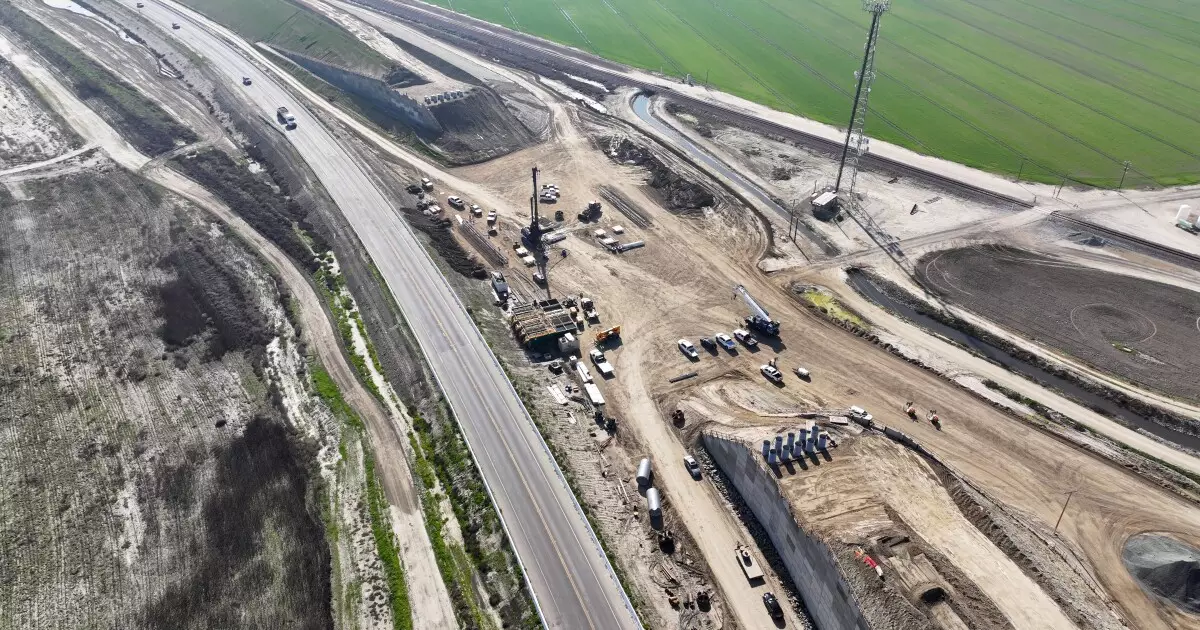California’s high-speed rail project has long portrayed itself as a bold, transformative vision for modern transportation. Yet, beneath the glossy promises lies a web of mismanagement, unrealistic expectations, and a troubling pattern of failure. The recent decision by the federal government to rescind over $4 billion in grants underscores a fundamental truth: this endeavor has devolved into a symbol of bureaucratic hubris rather than a tangible sign of progress. Instead of being a pioneering infrastructure, it has become an ongoing saga of squandered taxpayer dollars and unmet commitments.
The federal government’s refusal to continue funding reflects a sober acknowledgment that promises made by the California High-Speed Rail Authority (CHSRA) remain unfulfilled. Despite nearly a decade of financial injections and repeated assurances, the project has failed to deliver any meaningful milestones on time or within budget. This pattern of overpromising and underdelivering reveals a fundamental flaw in project management—a tendency to prioritize political symbolism over fiscal responsibility. It is a stark reminder that government-led infrastructure initiatives, when driven by political expediency rather than pragmatic planning, often culminate in expensive failures.
The Consequences of Political Overreach and Mismanagement
The California high-speed rail saga exemplifies how ambitious projects are often hijacked by political agendas that distort priorities and inflate costs. Initially envisioned as a sleek, bullet-train connection from Los Angeles to San Francisco, the project’s scope has ballooned to an astonishing $128 billion—far beyond initial estimates. This overreach has impoverished voters’ trust and drained public resources, raising questions about governance and oversight.
From the outset, the project has been marred by delays, cost overruns, and unreliable ridership forecasts. Despite repeated reassurances from officials, the truth remains: there is no credible plan to close the $7 billion funding shortfall for the initial segment, let alone complete the entire system. The refusal of federal funds indicates a broader recognition of this failure, and perhaps an implicit message that the state’s management cannot be trusted to see the project through. The CHSRA’s persistent overestimation of ridership and underestimation of costs not only erodes public trust but also risks turning a half-finished project into a symbol of government failure.
The political dynamics involved are equally telling. The administration’s attempts to leverage existing state funds, notably the cap-and-trade revenues, cannot mask the underlying reality: the project’s financial trajectory is unsustainable. The state’s willingness to declare that federal funding is not essential, despite years of dependency, suggests a recognition that the project’s original promises have long been compromised. It’s a sobering lesson in the dangers of overpromising, driven by ideological motives to showcase California’s supposed environmental leadership, at the expense of fiscal prudence.
Implications for Future Infrastructure and Public Trust
The recent presidential criticisms and federal rollback have broader implications beyond California. They serve as a cautionary tale for other states and governments contemplating large-scale, publicly funded infrastructure projects. The mistake has not been in the idea of high-speed rail per se, but in how it was executed—marked by overambition, mismanagement, and a clear lack of accountability.
Furthermore, the political fallout underscores the importance of balance in infrastructure planning. While the center-right approach champions private sector involvement and fiscal responsibility, it also recognizes that bold visions can be pursued judiciously without falling into the traps of incompetence and waste. The California example illustrates that misguided optimism and political expediency can turn what should be a catalyst for economic growth into an expensive black hole.
Even as the Biden administration temporarily restored some federal funding, the long-term viability of high-speed rail in California hangs in the balance. The project’s future hinges on whether the state can reframe its strategy to focus on cost-effective, realistic goals—rather than pursuing grandiosity at all costs. In the end, taxpayers deserve transparency, accountability, and projects that deliver tangible results, not hollow promises and gilded ambitions.

